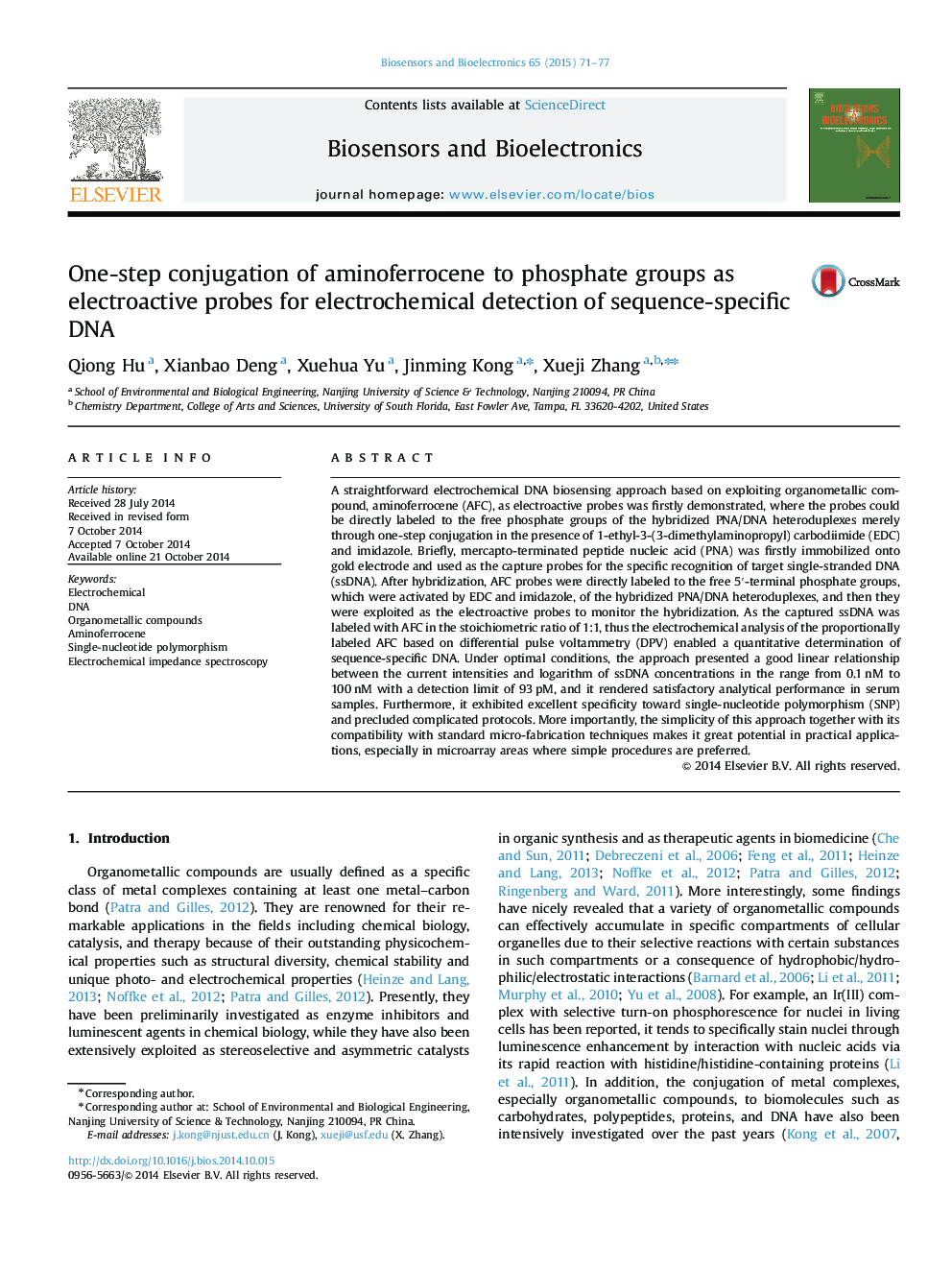| کد مقاله | کد نشریه | سال انتشار | مقاله انگلیسی | نسخه تمام متن |
|---|---|---|---|---|
| 866358 | 1470966 | 2015 | 7 صفحه PDF | دانلود رایگان |

• We presented a novel and straightforward electrochemical DNA biosensing approach.
• AFC was labeled to captured ssDNA as electroactive probe via one-step reaction only.
• Imidazole and EDC were exploited as the zero-length cross-linkers in conjugation.
• It was highly specific and it also showed acceptable analytical reliability in serum samples.
• It could integrate with micro-fabrication techniques to develop microfluidic chips.
A straightforward electrochemical DNA biosensing approach based on exploiting organometallic compound, aminoferrocene (AFC), as electroactive probes was firstly demonstrated, where the probes could be directly labeled to the free phosphate groups of the hybridized PNA/DNA heteroduplexes merely through one-step conjugation in the presence of 1-ethyl-3-(3-dimethylaminopropyl) carbodiimide (EDC) and imidazole. Briefly, mercapto-terminated peptide nucleic acid (PNA) was firstly immobilized onto gold electrode and used as the capture probes for the specific recognition of target single-stranded DNA (ssDNA). After hybridization, AFC probes were directly labeled to the free 5′-terminal phosphate groups, which were activated by EDC and imidazole, of the hybridized PNA/DNA heteroduplexes, and then they were exploited as the electroactive probes to monitor the hybridization. As the captured ssDNA was labeled with AFC in the stoichiometric ratio of 1:1, thus the electrochemical analysis of the proportionally labeled AFC based on differential pulse voltammetry (DPV) enabled a quantitative determination of sequence-specific DNA. Under optimal conditions, the approach presented a good linear relationship between the current intensities and logarithm of ssDNA concentrations in the range from 0.1 nM to 100 nM with a detection limit of 93 pM, and it rendered satisfactory analytical performance in serum samples. Furthermore, it exhibited excellent specificity toward single-nucleotide polymorphism (SNP) and precluded complicated protocols. More importantly, the simplicity of this approach together with its compatibility with standard micro-fabrication techniques makes it great potential in practical applications, especially in microarray areas where simple procedures are preferred.
Journal: Biosensors and Bioelectronics - Volume 65, 15 March 2015, Pages 71–77